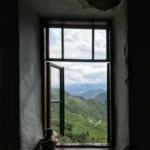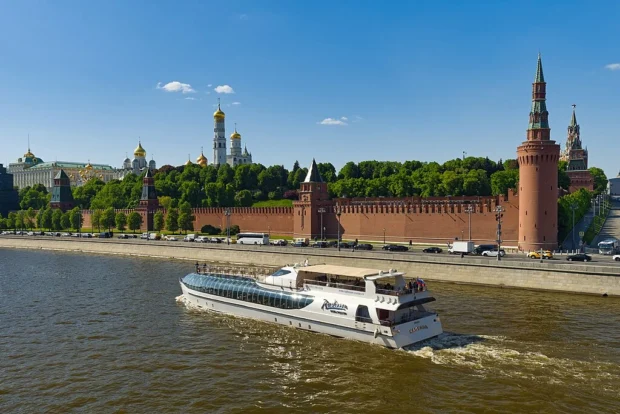The Kremlin in Moscow, Russia, is a symbol of centuries of power, culture, and intrigue. This fortified complex sits near the Moskva River’s banks and stands as a must-see for anyone curious about Russia’s rich past and vibrant present. Visitors often pair their Kremlin visit with stays in nearby accommodations ranging from cozy guesthouses to upscale apartments. Local eateries close by offer delightful Russian dishes like borscht and blini, perfect to fuel your day of exploration. Getting here is easy: from Moscow’s main train stations or Sheremetyevo and Domodedovo airports, take the metro to “Biblioteka Imeni Lenina” or “Aleksandrovsky Sad” stations, both just steps away from the Kremlin’s entrance.
Table of Contents
Why the Kremlin Holds Moscow’s Soul
The Kremlin has been Moscow’s center of power for more than 600 years. It is not just a fortress but also the seat of the Russian government and a UNESCO World Heritage Site. This place tells stories of tsars, emperors, Soviet leaders, and modern presidents. The massive walls and elegant towers hide palaces, cathedrals, and armories rich with treasures and renowned artworks. One quirky fact many miss is that the Kremlin’s walls are painted red, not for communism, but because “red” historically meant “beautiful” in old Russian.
The Kremlin’s Historical Timeline
Built originally in the 12th century, the Kremlin has changed dramatically over the centuries. It survived invasions, fires, and political upheavals. The current red brick walls and towers date back to the late 15th century. Inside, the Tsar Bell and Tsar Cannon stand as symbols of craftsmanship and historical power, famously too large to ever have been used in battle. These artifacts reflect the creative spirit and the strength of Russian heritage.
How to Navigate the Kremlin: Directions and Transport
Finding your way to the Kremlin is straightforward once in central Moscow. The metro is the most efficient and popular choice. From the city center, take the red or dark blue lines towards “Biblioteka Imeni Lenina” or “Aleksandrovsky Sad.” Those arriving by taxi or car should remember that parking near the Kremlin is limited and traffic can be busy, especially on weekends.
From Moscow airports, the Aeroexpress train to the city followed by a short metro ride is the quickest option. If you’re coming from Moscow’s main railway stations, the metro connections are well signposted, making it simple even for visitors less familiar with the city layout.
Nearby Attractions and Amenities
After visiting the Kremlin, you might want to explore nearby Red Square and the famous St. Basil’s Cathedral with its colorful onion domes. The area offers many cafés and restaurants where you can try traditional Russian dishes like pelmeni or zakuski. Small shops selling souvenirs and local crafts line the streets, perfect for finding a memorable gift.
Planning Your Visit: Best Times and Tour Tips
The Kremlin is busiest during summer and national holidays, so if you prefer calmer visits, aim for weekdays early in the morning or late afternoon during spring and autumn. Winters are magical with snow covering the grounds, but dress warmly! The Kremlin closes on Thursdays, so avoid that day to prevent disappointment.
Buying tickets in advance is wise. The Kremlin offers several types of tours, including guided walks that explain the history and significance of each part of the complex. Some areas require special tickets, such as the Armoury Chamber, where you’ll see royal treasures and Fabergé eggs.
After exploring Moscow’s Kremlin, you might enjoy a visit to another UNESCO World Heritage site that blends stunning landmarks with rich culture—Malta’s diverse historic sites offer a unique Mediterranean charm worth experiencing.
For a broader view of the city beyond the Kremlin walls, the post on Must-See Places and Local Tips for Visiting Moscow, Russia offers a great guide to other important landmarks and local spots to explore in Moscow’s vibrant cityscape.
Reservation and Tour Details
Most visitors book tickets online to skip lines. Group tours or audio guides are available in multiple languages, making the experience richer and easier to follow. Photography is allowed, but flash and tripods may be restricted inside certain buildings. Remember to wear comfortable shoes as the Kremlin grounds cover a large area with cobblestone paths.
Inside the Kremlin: Key Highlights Not to Miss
Walking through the Kremlin feels like stepping into a living museum. Don’t miss these essential sites:
- Assumption Cathedral: The spiritual heart of Russia’s Orthodox Church, known for its golden domes and stunning frescoes.
- Ivan the Great Bell Tower: Once the tallest structure in Moscow, offering panoramic views of the city.
- Tsar Cannon and Tsar Bell: Massive artifacts that amaze with their size and history.
- Armoury Chamber: Houses royal treasures, including coronation regalia, weaponry, and royal carriages.
- Grand Kremlin Palace: Former royal residence, now used for official ceremonies.
Each corner of the Kremlin holds stories that bring Russia’s history to life, from medieval times through the Soviet era to today’s government.
Little-Known Stories and Myths of the Kremlin
Many visitors don’t realize the Kremlin is said to be built over an older pagan site, where ancient rituals once took place. A favorite legend tells of a secret underground passage connecting the Kremlin to Red Square, used by spies and royalty. Another charming fact is that the Kremlin’s cat population is officially cared for, helping control rodents within this historic complex. These stories add charm and mystery beyond the grand walls and towers.
Official Resources and More Information
For the most reliable details about opening hours, ticket prices, and upcoming exhibitions, visit the Kremlin’s official website at kreml.ru. This site offers up-to-date information in English and Russian, helping visitors prepare thoroughly before arrival.
Exploring the Kremlin gives a deep sense of Russia’s identity-its power, art, and culture all wrapped in one remarkable place. Plan your visit thoughtfully to make the most of this historic landmark nestled in the heart of Moscow.

Eastern Europe travel specialist uncovering hidden gems from the Baltics to the Balkans.
- Moscow. Kremlin P5162617 2600 by Alexxx1979 on Wikimedia Commons – cc by-sa 4.0
